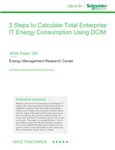The Corporate Sustainability Reporting Directive (CSRD) of the European Union (EU), finalized in January of this year, ushers in more comprehensive Environmental, Social, and Governance (ESG) reporting requirements and expands the number of organizations required to comply from around 11,000 to an estimated 50,000 globally.
Once ratified by the European Commission this fall, these standards will take effect in January 2024, impacting about 10,000 companies worldwide, a majority of which lie in the US, the UK, and Canada.
This marks a significant step towards refining ESG data reporting and sets the stage for an ongoing evolution in reporting standards.
Although the CSRD requires enterprises around the world to do considerably more work, the regulation is still a very good thing for businesses, investors, and the world as a whole. Here’s why.
The CSRD aims to eradicate greenwashing and elevate ESG investments
The CSRD implements significant changes to combat greenwashing and promote ESG reporting consistency. By establishing universal frameworks and stricter quantitative requirements, it reduces individual interpretation and fosters comparability.
The focus on double materiality — that is, reporting both company impacts on the climate and climate-related impacts on the company — ensures a rigorous assessment of environmental impact and risks. Mandatory external assurance subjects ESG data to audit, boosting transparency akin to financial reporting. These measures help investors identify outliers and make informed decisions.
Furthermore, CSRD's combating capabilities against greenwashing improve ESG report accessibility and trust. Standardized reporting formats enable better comparison of firms' sustainability efforts. The directive's emphasis on transparency showcases the financial value of sustainability practices, encouraging better corporate practices and informed investor choices.
CSRD mitigates the shortcomings of the existing standards, such as the Non-Financial Reporting Directive (NFRD), by expanding the scope to include more companies, improving the covered reporting topics, and establishing a single format for publishing ESG data, thus removing confusion stemming from multiple frameworks. CSRD paves the way for a more transparent and sustainable future in the global market.
So what do you need to do to keep up with the new CSRD regulations?
Enterprises must prepare themselves for the CSRD wave
In our work with clients (buyers, sellers, and investors in technology), we see that many are enthusiastic about voluntarily complying with CSRD, showcasing their eagerness for standardized ESG reporting. This enthusiasm presents an opportunity for enterprises to enhance their brand image and gain access to additional financing. However, businesses also feel overwhelmed and anxious about the new regulations, amidst increasing regulations and varying standards as well as a complex macrocosmic/geopolitical backdrop.
Amidst the looming confusion, enterprises grapple with challenges like poor data quality, particularly surrounding Scope 3 emissions. Additionally, they lack efficient ESG consultants to simplify CSRD-related reporting and struggle to accurately project the work that lies ahead.
To streamline the process and ease these burdens, businesses can take the following steps:
- Perform a comprehensive gap analysis of their current reporting and identify data requirements for CSRD compliance.
- Invest in automated reporting systems to reduce manpower burdens and enhance accuracy.
- Establish collaborative networks with consultancies, service providers, and software companies to bridge talent and technology gaps.
- Initiate dialogue with auditors to prepare for third-party assurance requirements under the new regulations.
Transformation of the partner landscape to keep up pace
Technology and data service providers in the sustainability enablement space view ESG data management and reporting as a low-hanging fruit.
Many have already begun developing high-end capacity through:
- Acquiring niche consultancies
- Developing in-house reporting platforms
- Collaborating with technology providers
- Hiring niche talent to help clients design ESG roadmaps and ease reporting burdens
However, they must address the following gaps:
- Integrate ESG reporting capacities for streamlined market messaging and to exploit opportunities
- Build clear market proof points as end-to-end enablers for ESG tracking and reporting, especially since enterprises are anxious about CSRD
- Innovate and improve Scope 3 emission data collection methodology, leveraging emerging technologies like cloud, AI, and blockchain for enhanced accuracy
- Develop in-house talent and capacity for auditing or collaborate with auditing firms to fulfill requirements around third-party assurance, especially for larger service providers seeking to be end-to-end players in the market
The CSRD marks a transformative milestone in ESG reporting, poised to curtail greenwashing and enhance greater trust in ESG investments. By establishing universal frameworks and stringent quantitative requirements, the CSRD ensures greater comparability and transparency in sustainability reporting. Its emphasis on double materiality and mandatory external assurance bolsters investor confidence and helps identify genuinely sustainable practices.
As the CSRD takes effect, enterprises must brace themselves for the regulatory wave by streamlining their reporting processes. Meanwhile, service providers must rise to the occasion, bridging gaps and evolving into potent enablers to empower enterprises in their ESG journey.
Together, this collective effort sets the stage for a more sustainable future, where businesses and investors alike embrace authenticity and responsibility.
Meenakshi Narayanan, Everest Group, also contributed to this report








